 The three wise men procession has been declared Festivity of Regional Tourist Interest in 2013 and ocurrs in the municipality of Limpias for the last 25 years. It represents the biblic scennes of the Three Wise Men and has the peculiarity of being celebrated on the 6th of January instead of the 5th of January (day of celebration of the Three Wise Men in the rest of Spain).
The three wise men procession has been declared Festivity of Regional Tourist Interest in 2013 and ocurrs in the municipality of Limpias for the last 25 years. It represents the biblic scennes of the Three Wise Men and has the peculiarity of being celebrated on the 6th of January instead of the 5th of January (day of celebration of the Three Wise Men in the rest of Spain).
A big number of residents participate in the festivity with colour, vigour and adornments. They fabricate floats and carry animals, as well as folk bands that cheer up the procession. They also organize a flee market with stalls with local products for sale.
It is celebrated at midday and departs from the Ermita de San Roque, which is located at a few hundred metres from the village, and it arrives to the parish Church after crossing the streets and dramatise various Evangelical passages.
During the tour the pages ride horses and lead the processsion. The Virgin Mary is mounted on a donkey and it is driven by her spouse, the Saint Joseph, representing the hunband and wife´s trip from Nazareth to Bethlehem.
[su_youtube url=”https://www.youtube.com/watch?v=53xNd1LfmhA”]
[/su_youtube]Next, the King Herod is escorted by a roman soldiers squadron and a group of midwifes, Hebrew women, etc… The procession ends with a group of shepherds with presents for the Baby Jesus.
From 2013, the scene of the Massacre of Innocents is a reminder of the order King Herod gave: to kill all children under the age of two. Women express the anguish the children´s mothers would had felt, closing the Auto Sacramental.
Finally, in Seña, there is a big party with music and samples of typical local food and products.
 Declared Festivity of National Tourist Interest from 1985, it occurs at the beguining of the Christian Lent, 40 days after Ash Wednesday.
Declared Festivity of National Tourist Interest from 1985, it occurs at the beguining of the Christian Lent, 40 days after Ash Wednesday.
ORIGINS AND EVOLUTION
The first written evidence of the event appears in the local paper “Eco de Santoña” in 1892. At the beginning of the XX century, this festival was celebrated in the Town Hall and not in the streets. It was mainly based on Dance Masks cheered up by an orchresta that performed waltzs and polkas till the morning.
During Franco’s dictatorship the festivity was banned. In 1981 the street carnival was re-born, just as we know it today, iniciated by the local clubs that knew how to drive people into the festival´s recovery.
In 1981, although the festival did not have official recognition, the residents dressed in costumes in a private manner, in the establishments clubs owned, to celebrate. Eventually, people came out spontaneously and gathered in the Plaza de San Antonio, turning the place into the neuralgic point of the festival.
In 1982 the festival starts to be celebrated in an official manner and during the following years it is given a 3 parts structure: Costumes parade, Street Musicians Bands and Judgement at the Bottom of the Sea, and other clebrations such as the Announcement, the Cultural Activities, Queen of the Carnival Election, the Moor´s Night and the Villager´s Day.
From that time onwards, the Carnival in Santoña, has been growing in a spectacular manner until the point of being considered one of the most representative carnival in northern Spain.
CARNIVAL PARADE
There are two parading days. On Friday, the parade is dedicated to the children and on Saturday, “the big Day” is dedicated to everybody. There is a Judge that will award a prize to the best costume, following criteria such as originality, spectacularity, colourfulness and organisation.
JUDGEMENT AT THE BOTTOM OF THE SEA
From the start of the Santoña Carnival, the Judgement at the Bottom of the Sea has been original and different from other Carnivals.
The text the original story is based upon comes from a street band lyrics song in 1934, known as los Parrandistas. That year, a group of sailors in the village, came out to the streets to sing the story of a Red Sea Bream who was in love of a Mairmaid and kidnapped her. The Red Sea Bream is severely judged at the bottom of the sea.
The idea of representing the song arised during the Pro-Carnival Commission of 1982 which was formed by clubs, bars, restaurants and shops.
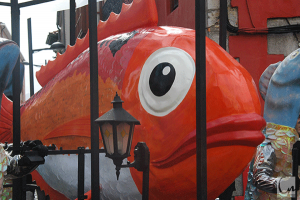
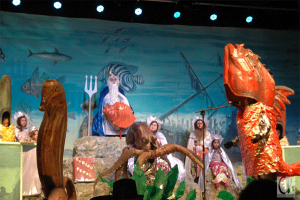
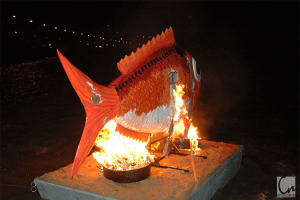
The Commission decided that instead of bury the sardine (traditional act during carnival in the rest of Spain) the song from 1934 could be represented. The original text was recovered by the La Zarceta club adapting the content to the needs of the time. Other clubs colaborated in the project.
For example, the fish were made out of cardboard and later other elements were introduced, such as the set and other costumes.
THE STREET BANDS
It is an artistic genre that combines music and theatre, very often in Carnival time. They are groups of between 8 and 14 people that perform lyrics in a funny and ironic manner about local or national, social and political subjects.
Together with the voices there are percussion instruments. These musical representations are being judge and given prizes based on their scenography, lyrics, humour and costumes.
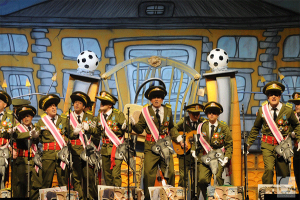
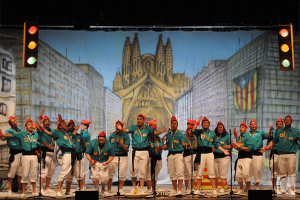
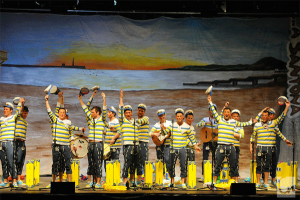
THE VILLAGER´S DAY
It is the End of Carnival Time and the people of Santoña make their own carts provided with food and dressed in old villager´s costumes to run the municipality streets.
This is a festival that invites to improvisation, ingenuity and sense of humour. This is the time when the marceros sing the popular March songs.
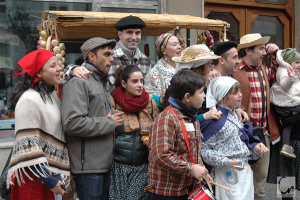
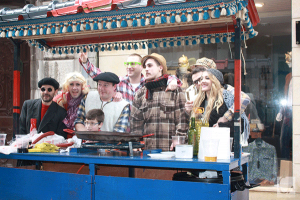
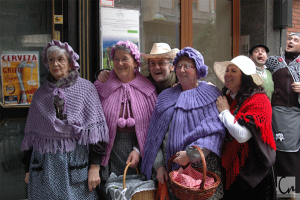

The evening of 23 June, St. John’s Eve, is the eve of celebration before the Feast Day of Saint John the Baptist. The shortest night of the year is celebrated during this evening coinciding with the Midsummer.
Bonfires are the symbol of this emblematic night that, by the sea, the music and the crowd make of this event a singular party.
St. John’s Eve is a party deeply rooted in Spain, specially in costal and fishing villages. This party is celebrated within the municipalities of the MMS. In Laredo the main characters are the “sanjuaneras”, a group of women that organize the party every year.
Shortly before midnight these women run the village’s streets towards the La Salvé beach in the “carro sanjuanero” where they procede with the traditional washing of the feet and the ignition of the bonfire.
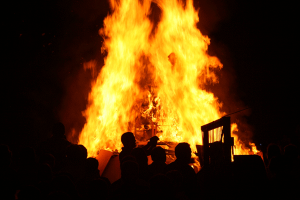
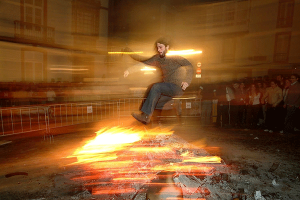

Declared Festivity of Regional Tourist Interest in the municipality of Ramales de la Victoria on the following Saturday after St. Peterthe Apostle (June 29th).
The tradition says that during the I Carlist War of 1839 the Carlists troops flee the locality, they left a trunk full of Manila Shawls. When the General Espartero, in the command of the Isabelline troops, entered triumphant in Ramales de la Victoria, found the trunk and gave the shawls to the women that were cheering the General.
From then on the women from the village wear a shawl and go to the plaza and the men wear a suit, they dance ‘chotis’ to the sounf of a burrel organ.
A judge decides who is the winner couple based on the dancing style, the couple’s harmony and the quality of the exhibited shawl… some of are true works of art.
The dance is celebrated in the beautiful frame of the José Antonio Gardens, decorated for the ocassion, as well as shawls on the village’s balconies.

Declared Festivity of Regional Tourist Interst in 2010 it is celebrated in Suances each July 16th and it is a festivity of special significance in the fishing towns, as Carmen is the patron saint of fishermen and fisherwomen. This is the day the village dresses in its better colours and celebrates the Fiesta Mayor, which congregates thousands of visitors.
The reason why the event was given the Festivity of Regional Tourist Interest label was the “link of the event to the history and tradition of the inhabitants of the municipality, the manifestation of cultural and traditional values and its contribution to the promotion of tourist attractions the municipality offers”.
One of the best and expected moments of the festival is the Virgin Carmen procession. The image of the Virgin is carried by fishermen and members of the brotherhood on their shoulders together with the authorities, tambourines, the Grupo de Danzas de Nuestra Señora de Las Lindes and del Carmen. A crowd of neighbours and visitors run the town’s streets sttoping in the way in the Capilla del Carmen and ending at the sea port.
This is when the exciting maritime procession starts and the boats, decorated with flowers and colourful garlands, carry the patron saint around the ría de San Martín, with all the boats horns making a spectacular noise.

This popular festival has been celebrated since the year 2000 in the municipality of Escalante during the last weekend of July. The promoter is the Asociación pomológica of the municipality.
This non-profit organization pretends to promote the cider culture in Esclante in particular and in Cantabria in general and to empower its recovery as a typical elaborated product by Cantabrian artisans “since time immemorial”.
Thanks to the management of this association, which originated in 2008, and with the colaboration of the Esclante Town Hall a municipal cidery was created as an artisan cider industrial elaboration place.
The association manages the Cerroja Watermill and later the Herradero in the Molino River as an apple tree plantation and a place for the neighbours to elaborate cider.
These activities affect the good development of the festival and has become a prestigious cultural event within our region.
The program of the Cider Festival includes numerous activities related to the cider tradition and culture and the Cantabrian folk, such as gigs, shows and varieties of cider tasting.
The day starts on a Saturday at midday and this is the moment of the opening of the Festival, where the visitors will be able to have a “culin de honor” (drop of honour) and start tasting the different types of cider.
At night there are different gigs of folk music.

It is a festival declared Festivity of Regional Tourist Interest and it is celebrated in Carasa (Junta de Voto) each August 16th, in the festivity of San Roque.
The story goes back to the year 1477 in which the celebration is originated. That year there was a devasting draught that affected the harvests in thea area. The leyend says that the mayor of Carasa brought a female black cat with magic powers. When the cat was loose and went to the harvest fields, these improved.
Since then, this tradition is celebrated in the day of San Roque. The cat is mounted on a decorated cart pulled by a donkey and preceded by children dressed with costumes and by the rest of neighbours that enter the plaza in a triumphant manner.
Before they let the cat loose a neighbour recites picaresque rhyms with loads of good sense of humour and later he/she goes over the local news.
At the end of the ceremony the cat is set loose. If the cat goes towards the harvest fields the harest will be a good one. If, on the contrary, the cat goes towards the mountain the harvest will be a bad one.
 HISTORY
HISTORY
In 1908, this Festivity of National Tourist Interest is born in Laredo and it is celebrated on the last Friday of August. It origins go back to the beginning of the XX century, at a time of cultural esplendour and economical boom, which converted the municipality into a summer destination for the bourgeoisie. These middle class people contributed to the organisation of festivals and celebrations that stand out for their good taste, elegance and distiction.
The battle of Flowers was first created as a Summer Farewell and it was driven then by the Town Hall´s secretary Arsenio Lazbal González and the Corporación Municipal and la Cofradía de Pescadores was a fundamental support.
At first, the Battle of Flowers ocurred on the water, the 30th of August 1908, with the involvement of 25 rowing boats decorated with flowers, paper ribbons, sweets and cakes placed from prow to poop. The winning vessel was a gondola, drawn by Gonzalo Bringas Vega and promoted by Nicasio Escalante. It paraded with the name of “La Argentina” and it was the first winner of the Battle of Flowers. This had such success that it was decided that the next edition was celebrated in the streets of Laredo to create a greater implication of the people of the town.
The first decades and until the Guerra Civil in 1936, the Battle of Flowers becomes a secular event, playful, with a Carnival touch and with erotic insinuations in which men and women paraded on the floats. The floats went from being floats with simple decorations with a few flowers and leaves to complex artistic structures.
The Spanish Civil War supposed a halt in the success of the Battle of Flowers and the postwar years entailed a low attendance from foreigns and nule media repercussion. Even so, thanks to the effort and identification of the locals, a relunch was achieved. These post-war editions had an oppressive social and cutural atmosphere and this influenced in the festivity spirit, losing the erotic touch from previous years. This is the reason why the floats grew in volume, complexity and decoration.
From the 60´s, with the touristic boom, the battle of Flowers becomes a popular festival, regaining its character. The changes emphasized in the improvement of materials and tools to build the figures which, from this time onwards, will be big and complex.
The change in size and complexity during elaboration lowered the number of participants. From 1964 the celebration is moved from Sunday to Friday to slow down the the overwhelming visitors attendance. In 1965 it was declared Festivity of National Touristic Interest.
The last decades during the XX century were, probably, the greatest and most spectacular of the editions of the Battle of Flowers, for the magnitude and quality of the floats which made it difficult for the jury.
DESGIN AND BUILDING
The elaboration of a float is a complex project that requires drawing, metalic structures building, carpentry, sculpture, horticulture and logistic knowledge and skills, but above all, it requires a thorough planning.
FLOWERS
The main element of the Battle is, according to the rules, to cover most of the float with flowers with acromatic harmony, layout and quality techniques to display the fundamental elements for its final assesment.
At first, the floats appeared decorated with chrysanthemum, roses and hydrangeas that were collected in the local back gardens. From the 50´s, the use of dahlias, carnations and chinese carnations was generalized.
CULTIVATION
This difficult process starts in Autumn when the dahlia bulbs are pulled out, then classified and later stored until they are planted once again in May.
In March and April carnation and daisy seedings are prepared and then transplanted in mid June. Is during this time when, the soil where the flowers are planted, is turned and prepared for the cultivation.
The plantation, in the case of the dahlias, is being carried out during May and the carnations and daisies, during June. During the summer the participants need to earth up, water, fertilize and clean the plants so they can arrive in a perfect state to collection time days before the festival.
Hundreds of neighbours and collaborators are involved in the work with only one objective, to dress the float in time for the festival. On the Wednesday, the carnation collection starts, as well as its size and colour selection. The same process is repeated on the Thursday for the dahlias.
THE MAGIC NIGHT
The night before the Battle of Flowers is where the placing of the flowers and petals on the float by the participatns can be seing with the theme premise called ALLEGORY.
The main techniques for decoration is the flowers nailing and petals placing. The process of nailing consists in piercing the flowers with nails on the different surfaces and motifs of the float. On the other hand, the placing of the petals consists on separating the petals from the flowers one by one for later stick them with a special glue, made out of flour and water, on the most delicated and detailed elements.
THE GREAT PARADE
It is celebrated on the last Friday of August, starting at 17:30, the floats will parade with children dressed according with each ALLEGORY theme.
The floats should comply with the following measurements: A minimum of 6 mts. and a maximum of 8,50 mts. of length, a minimum of 3,5 mts. and a maximum of 5 mts. of width and a minimum of 5 mts. maximum of 7 mts. of height. The motiffs should only be flower arragements, although leaves are permited as a base for the flowers.
Each float have between 35.000 and 100.000 flowers.
The parade will run 3 times. The second time is when the jury, formed by 5 people, emits its veredict. On the third round, a trophy is given to the winners.

Declared Festivity of Regional Tourist Interest they are celebrated between the 5th and the 8th of September. In 1941 the bulls run was celebrated in just one day and it is not until 1972 when the event is spreaded in 3 days.
From the start of the day there is hubbub in the town, with street music bands to cheer up people, they serve as a warning for the public to know the run is going to start soon.
The entertainment increases and visitors enjoy the festive atmosphere. At midday 3 rockets of warning are sent to the public to let them know that, those who are not participating, have to clear the designated path for the bulls run.
The bulls are set free from the plaza de toros de La Nogalera (bulls arena) and after running the main street of Ampuero beasts and runners go back to the arena where the public and the music bands await singing and dancing.
Once the run is over, the public and the runners go out in the town to continue with the party accompanied by music bands cheering up the streets.

The marmite o marmita, depending on the place, is a fishing dish that originated on fishing boats and fishing ports during the tuna season and, with time, it has become a typical dish of the fishing villages during summer.
During the patron festivities of la Virgen del Puerto, the first fortnight of September, the Great Marmitada is celebrated. It was declared Festivity of Regional Tourists Interest in 2010 due to the link of the event to the fishing history and tradition of Santoña, cultural values and traditions that are manifestated by the promotion of the municipality touristic attractions.
The event has been celebrated for more than 40 years and it is a neighbourhood colaboration example, as well as a media impact.
Around 10.000 portions are served this day. Locals participate in the peeling, the crunching and the cooking of the potatoe and tuna dish. The portions are served at the Glasis rugby field.
It is worth to mention the popular marmitadas celebrated in places like Laredo on the 16th of August and in Colindres during the Fiestas de San Gines (25th of August).
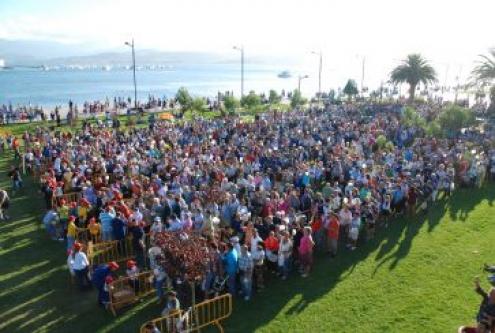

Declarade Festivity of Regional Tourist Interest is celebrated every 15th of September. The sanctuary with the same name is situated in Hoz de Marrón, locality belonging to the municipality of Ampuero and it is the patron of Cantabria since 1905.
In this sanctuary we will find a small image of the Virgin, of 21 cms of height, made out of polichrome wood and hispano-flamenco style. Its origins are estimated to be from the XV century.
The veneration history of the Bien Aparecida originates in the year 1605, when some shepherds found a statue in a ruined shrine. The inhabitants of Hoz de Marrón considered this to be a miracle and transported the figure to their church. There was a big storm and decided to leave the virgin in the Somahoz hill until the storm passed. True or legend, there was confrontation with the neighbours of Ampuero, who claimed their statue of a virgin went missing only a few days earlier.
The inhabitants of Hoz insisted on not having stolen the figure and instead, they said the Virgin had appeared, well appeared (bien aparecida). Shortly later, a temple was built to protect the Virgin and from then on it was called the sanctuary of the Bien Aparecida and it has become a place for devotion for the Cantabrian people who go yearly on the 15th of September to pay tribute to their patron.
On this day, they also celebrate with folk music around the Sanctuary, a traditional romeria and countryside food in which hundreds of people participate, many of them following the traditional climb to the place on foot making 15 steps representing the Passion of Christ along 5 Kmts of climb.
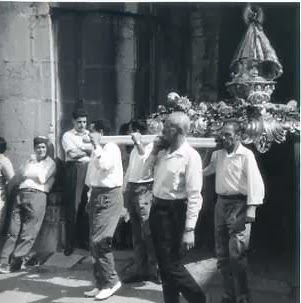

This Festivity of National Tourist Interest originates in Laredo in the year 2000 with the 500th monarch birth aniversary motive, which is celebrated every year during the second fortnight of September with great involvement and acceptance.
For 4 days the village recreates the arriving of Carlos V in 1556, on the way to his retirement to the Yuste Monastery and Laredo´s streets and shops are decorated to wellcome the Emperor and his entourage. This is all organized by Laredo Town Hall and the Cultural Association of friends of the Disembarkment of Carlos V “El Palenque” colaboration.
The historic link of Laredo with the figure of Carlos V has been very close along the years. Carlos V presence for one week in 1556 supposed the most significant moment, politically and commercially, the village experimented.
In the past, the Laredo docks had been used by Carlos V grandparents the Catholic Monarchs and by his mother Joanna “the Mad” as a place to disembark to marry to his father Phillip “the Handsome”.
In addition, the Laredo port stands out for its economic strength and commercial activity with other European countries, specially for being the only port in the Cantabrian coast authorized to disembark expeditions to America.
RECREATION
On Thursday, artistic groups and associations gather together to iniciate the festival. Later, a passacaglia is celebrated with musicians, comedians and jugglers.
The Friday is considered “día grande” (big day). In the morning the market opens to the public and during the day different activities occur such as, the Children´s Medieval Tournament and Games from the Period , as well as Reinassance Dance for adults with different settings where belly dancers, comedians, etc, are found.
In the evening the event is moved towards the Salvé beach where different shows of falconry and jugglers can be seen, all aimed to entertain the public until the Great Imperial Courtship Parade starts.
This Great Parade starts in the Casa de Cultura with loads of altruistic participation from locals and visitors, who obtain the XVI century dresses to recreate the year 1556.
The parade is headed by the Emperor´s sisters followed by the rest of the court and the rest of the plain town with comedians, musicians, jugglers and pyrotechnics.
The highlight arrives with the Disembarkment of the Emperor at Salvé beach, in which the Emperor with solemnity said:
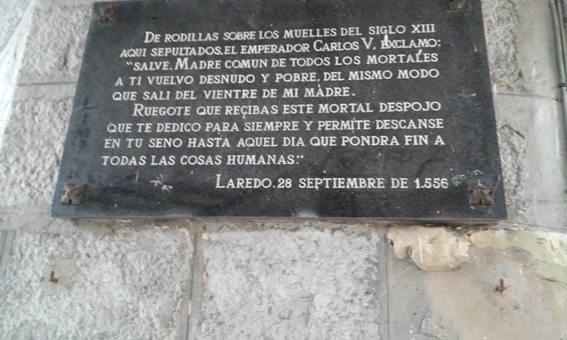
“Hail, Mother common to all mortals, to you I come back naked and poor, the same way I came out of my mother´s abdomen. I beg you recieve this waste of mortal, always dedicated to you and allow me to rest on your bosom until the final day of all human things”.
After these words people receive him with dancing musical representations and spectacular jousts in which Knights demonstrate their courage and lance skills to the Emperor.
To end the evening there is the Great Dinner in the famous area known by the tunnel, without a doubt an incomparable settlement that honours the period, with the tasting of delicious food, a debility for the Emperor.
On the Saturday, the streets of the old town, are full of musicians, comediants, jugglers and other diverse characters mixed with linage dames and nobles.
There is a renaissance with great variety of artisans and an imperial parade in which Carlos V salutes the public.
On the Sunday, the party goes on like Saturday. During the evening piroctechnics shows mark the farewell to the Emperor on his way to retirement in Yuste.

It is framed inside the festivals of Ampuero during September and it is one of the most popular. The Verbena de la Rosa is celebrated on a Saturday, the second fortnight of September.
At night, people buy numbered paper roses sold in the plaza. Red roses for men and white roses for women, they need to find their matching numbers. Here, everything goes, from asking around the number on your rose or displaying a board with the numbers to see. The lucky ones to find their match first will win a prize.




